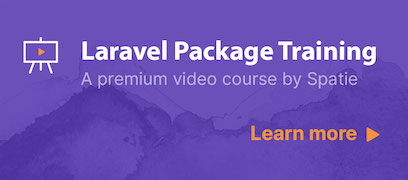This package contains a Nova field to add tags to resources. Under the hood it uses the spatie/laravel-tags package.
Learn how to create a package like this one, by watching our premium video course:
We invest a lot of resources into creating best in class open source packages. You can support us by buying one of our paid products.
We highly appreciate you sending us a postcard from your hometown, mentioning which of our package(s) you are using. You'll find our address on our contact page. We publish all received postcards on our virtual postcard wall.
This Nova field requires MySQL 5.7.8 or higher.
First you must install spatie/laravel-tags into your Laravel app. Here are the installation instructions for that package.
Next, you can install this package in to a Laravel app that uses Nova via composer:
composer require spatie/nova-tags-fieldTo make an Eloquent model taggable just add the \Spatie\Tags\HasTags trait to it:
class BlogPost extends \Illuminate\Database\Eloquent\Model
{
use \Spatie\Tags\HasTags;
...
}Next you can use the Spatie\TagsField\Tags field in your Nova resource:
namespace App\Nova;
use Spatie\TagsField\Tags;
class BlogPost extends Resource
{
// ...
public function fields(Request $request)
{
return [
// ...
Tags::make('Tags'),
// ...
];
}
}Now you can view and add tags on the blog posts screen in your Nova app. All tags will be saved in the tags table.
By default a tags field will display a maximum of 5 suggestions when typing into it. If you don't want to display any suggestions, tag on withoutSuggestions().
Tags::make('Tags')->withoutSuggestions(),You can change the number of suggestions with limitSuggestions().
Tags::make('Tags')->limitSuggestions($maxNumberOfSuggestions),The underlying tags package has support for tag types. To make your tags field save tags of a certain type just tack on the name of type when adding the field to your Nova resource.
// in your Nova resource
public function fields(Request $request)
{
return [
// ...
Tags::make('Tags')->type('my-special-type'),
// ...
];
}If the user is only allowed to select one tag for your resource you can call the single method.
// in your Nova resource
public function fields(Request $request)
{
return [
// ...
Tags::make('Tags')->single(),
// ...
];
}The field will be rendered as a select form element. It will be populated by the names of the tags already saved.
For more info on how to work with the saved tags, head over to the docs of spatie/laravel-tags.
If you want to perform crud actions on the save tags, just create a Nova resource for it. Here's an example.
namespace App\Nova;
use Illuminate\Http\Request;
use Laravel\Nova\Fields\Text;
use Spatie\Tags\Tag as TagModel;
class Tag extends Resource
{
public static $model = TagModel::class;
public static $title = 'name';
public static $search = [
'name',
];
public function fields(Request $request)
{
return [
Text::make('Name')->sortable(),
];
}
}When creating the field, you can use the withLinkToTagResource method.
Example:
Tags::make('Tags')->withLinkToTagResource() // The resource App\Nova\Tag will be used
Tags::make('Tags')->withLinkToTagResource(\Custom\CustomTag::class) // The resource \Custom\CustomTag will be usedcomposer testPlease see CHANGELOG for more information on what has changed recently.
Please see CONTRIBUTING for details.
If you discover any security related issues, please email freek@spatie.be instead of using the issue tracker.
The Vue components that render the tags are based upon the tag Vue components created by Adam Wathan as shown in his excellent Advanced Vue Component Design course.
The MIT License (MIT). Please see License File for more information.





